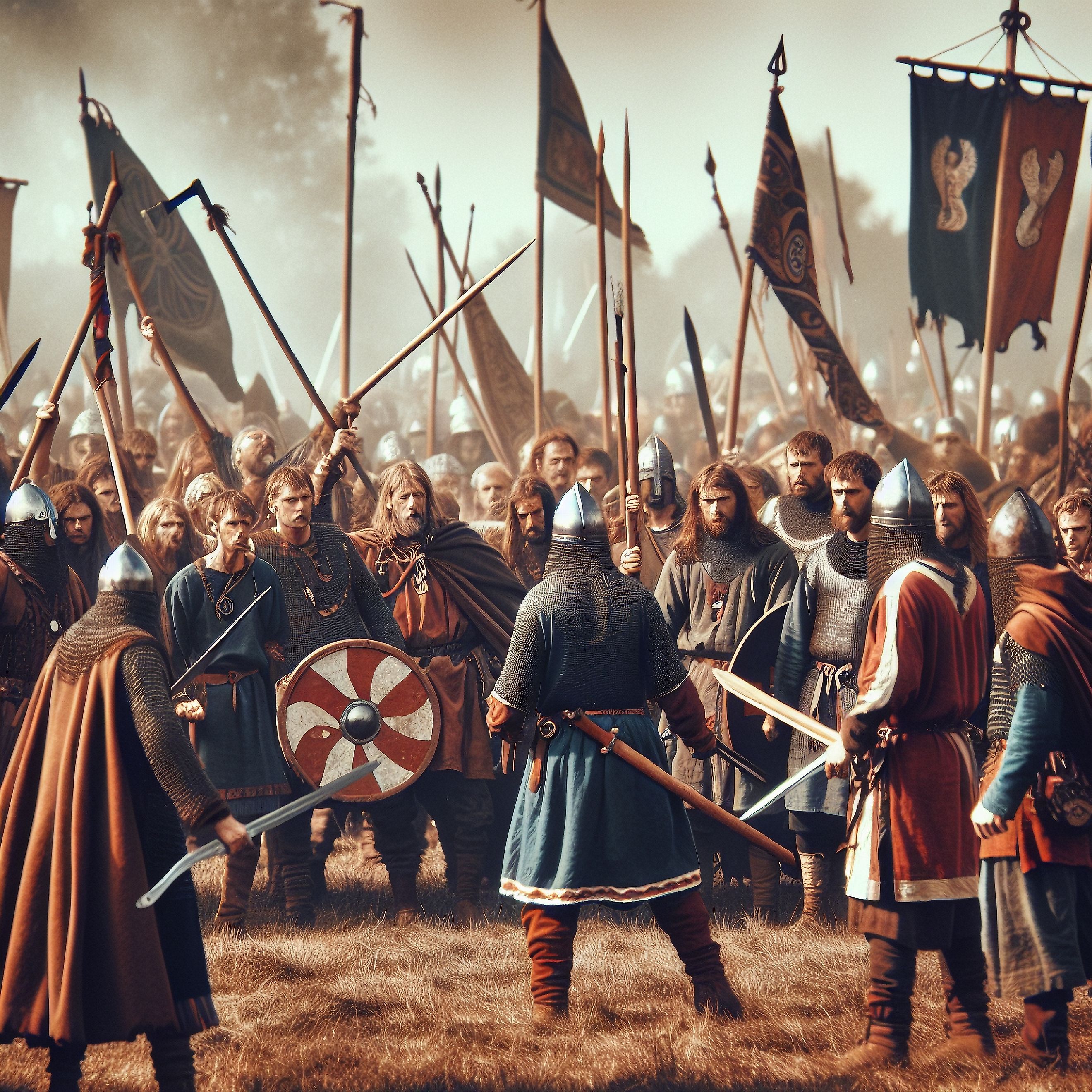
The Barbarian Successor Kingdoms of the Western Roman Empire
Founded in 27 BC, the Roman Empire was one of the most powerful institutions in the world, reigning supreme over the entire Mediterranean world from modern-day Portugal to Syria from west to east and England and Egypt from North to South. Despite this, the empire did not last forever and in 395, the empire was permanently split between the Western Roman Empire and Eastern Roman Empire, which is more popularly known as the Byzantine Empire. Although this split had roots going back further when Emperor Diocletian temporarily split the empire in two in 276 to better manage it.
Both halves of the empire fell at different times. The Western Roman Empire collapsed in 476, and the Eastern Roman Empire would continue to exist until the Ottoman Turks conquered it in 1453 with the fall of its capital, Constantinople.
The Western Roman Empire collapsed due to various factors, but the most well-known one was the incursion of several barbarian tribes into the area in the late 4th and 5th centuries. These so-called barbarians would set up successor states in the former territories of the Western Roman Empire. Despite their reputation, many did keep alive both Roman law and customs. Read more below about the Barbarian Successor Kingdoms of the Western Roman Empire.
Ostrogothic Italy: 493 to 554
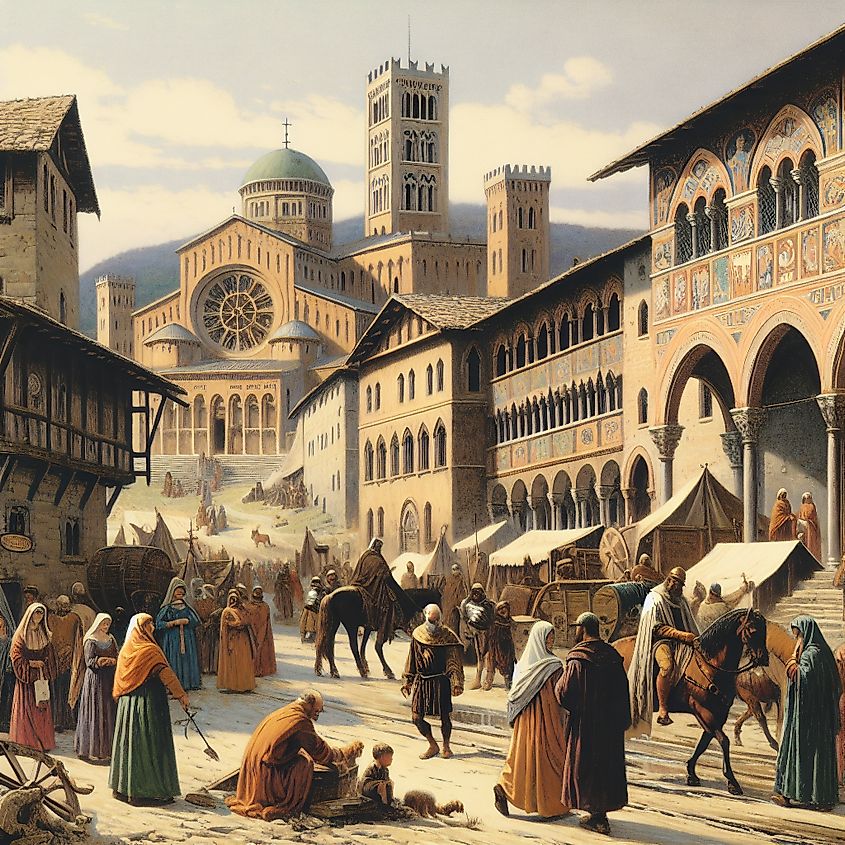
At the fall of Rome in 476, Italy passed into the hands of Odoacer, a Germanic warlord who named himself King of Italy and sent the imperial crown to the seat of Constantinople.
The Germanic Ostrogoths, meanwhile, had been a thorn in the side of the Romans for centuries, although the Romans had used them as mercenary forces from time to time. Their rule was that Theodoric had been raised in the Eastern Roman Empire, but following conflicts with the empire, the then Eastern Emperor Zeno sent Theodoric and his Ostrogoths to recapture Rome. He fought against Odoacer from 488 to 493 until, at last, Theodoric came out on top as the ruler of the Ostrogothic Kingdom of Italy.
During his reign from 493 to 526, Theodoric was known for both religious tolerance of the various Christian groups and for Roman institutions. He integrated Romans into his court including Boethius, a philosopher who would write the Book The Consolation of Philosophy.
He would become known as Theodoric the Great, but his successors were not so lucky. From 534 to 554, Emperor Justinian of the Eastern Roman Empire led a campaign to reconquer Italy from the Ostrogoths. Although this campaign ended with a Roman victory, the fighting devasted Italy itself, and the Ostrogothic Kingdom was no more.
Vandal Africa: 435-534
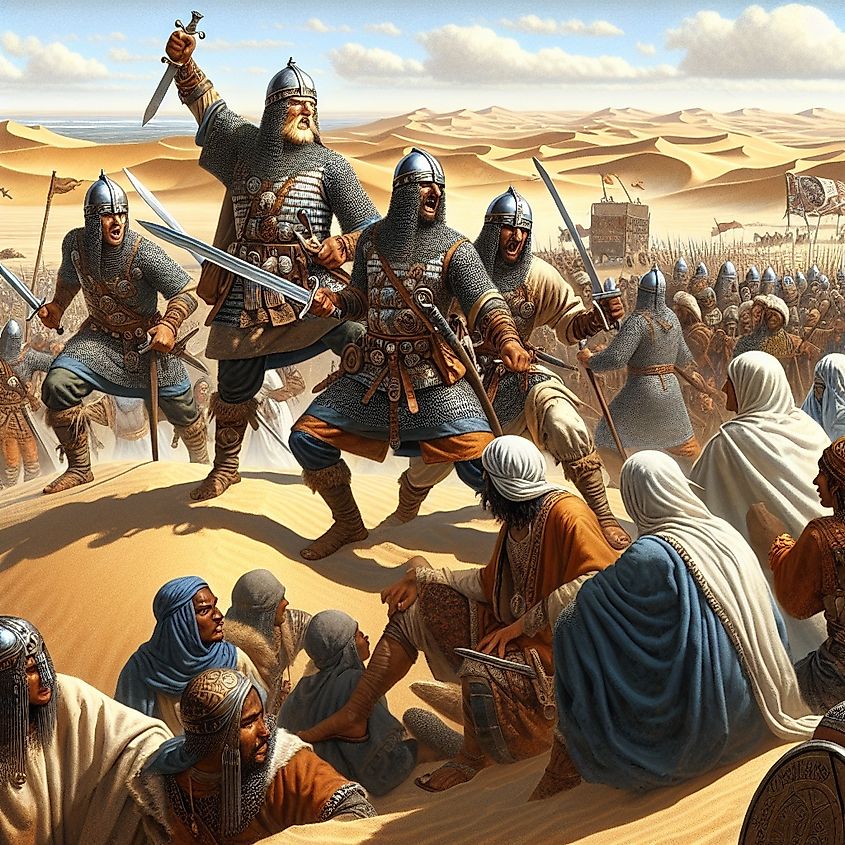
It is from the Vandals that we get the name vandalism or wanton destruction of property. This Germanic group began migrating west from Central Europe due in large part from attacks by the Huns. They made their way across Western Europe, eventually reaching modern day Spain.
In 429, under the leadership of Genseric, the Vandals crossed over into North Africa. They came at an ideal time as the Western Roman Empire was in the middle of one its many internal conflicts, involving the Governor of Africa Bonifatius.
By 439, the Vandals had taken over much of modern day Morocco, Algeria and Tunisia. The group gained a bad reputation among Catholic Christians due to persecution. The Vandals were Arian Christians, which disagreed about the nature of Jesus.
In 455, Genseric's son Huneric was engaged to a Roman Princess Eudocia, but the Romans backed out of the deal. In response, he invaded and sacked Rome. One source suggests that the Vandals were allowed to steal the wealth of the city but they avoided killing civilians due to a deal with Pope Leo I.
The Vandal Kingdom continued to exist until 534 when Justinian I sent out Belisarius to conquer the region as part of a campaign to reconquer the lost territories of the Western Roman Empire.
Visigoth Spain 418 to 720
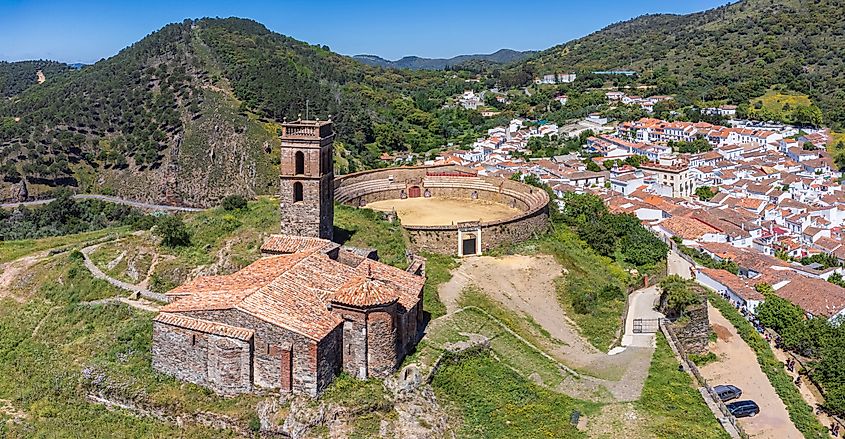
The Visigoths were the western tribe of the larger Goth group, while the Ostrogoths were the eastern tribe. They began to cross the Danube in the 370s into the Eastern Roman Empire. After mistreatment by the local Roman officials, the Goths would rebel against the Romans and dealt them a stern defeat at the Battle of Adrianople.
Following this attack, the Western Romans would curry favor with the Visigoths, using them as mercenaries under their leader Alaric I. However, after a variety of failed deals with the Romans, Alaric invaded Italy in 410 and for the first time in the Empire's history, Rome itself was sacked.
In 418, the Western Emperor Theodoric gave King Wallia land in then Southern France. As the decades went on, through both deals with the Romans and invasion, the Visigoths slowly absorbed the Iberian peninsula completing the conquest in 472.
Although the Visigoths were Arian Christians like the Ostrogoths and Vandals, in 589, King Reccard I converted to Chalcedonian Christianity(Catholicism). The kingdom had its own legal code and largely adopted Latin as a language.
However, in 711, Tariq ibn-Ziyad, the governor of Islamic Africa under the Umayyad Caliphate invaded Spain and crushed the Visigothic forces, which established Al-Andalus. Despite this conquest, a small portion of Northern Spain would persist under Christian rule and would eventually reconquer the Iberian Peninsula as part of the Reconquista.
Anglo-Saxons: 410 to 1066
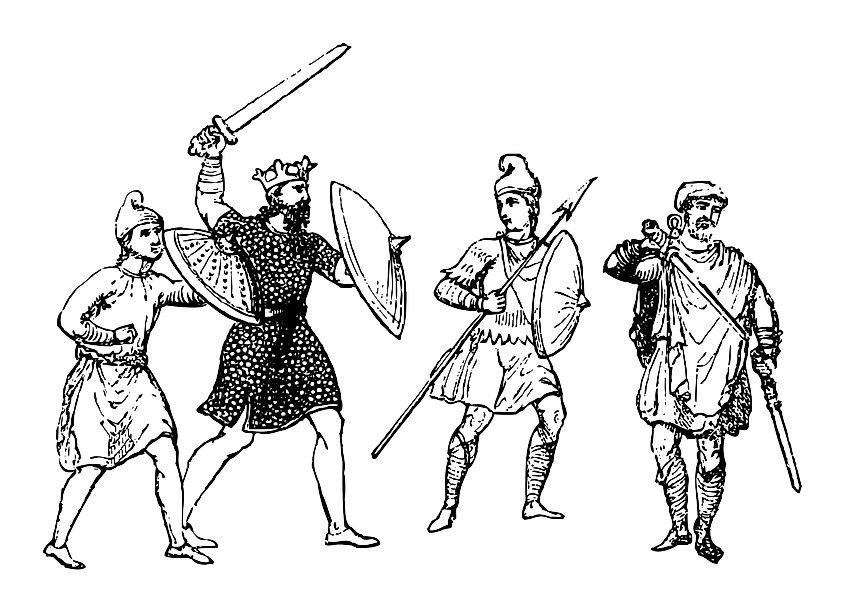
It is difficult to determine a precise date for the Anglo-Saxons rise to power in England, due in part to the sparse documentation from the period.
Unlike other regions, Rome itself had largely abandoned Britain in 410 due to troops leaving to confront a mixed group of barbarians crossing the Rhine.
Anglo-Saxons had lived in Britain as mercenaries but they began to arrive in greater numbers from modern day Denmark, Belgium, and the Netherlands in the 400s and 500s. The Romano-British did fight against the Anglo-Saxons. One account by a monk named Gildas states that a man named Ambrosius led a brave defense. Some have suggested this man was the inspiration for King Arthur of legend.
By 650, the Anglo-Saxons had established several independent kingdoms in Britain: Northumbria, Mercia, Wessex, Sussex, Kent, Essex, and East Anglia.
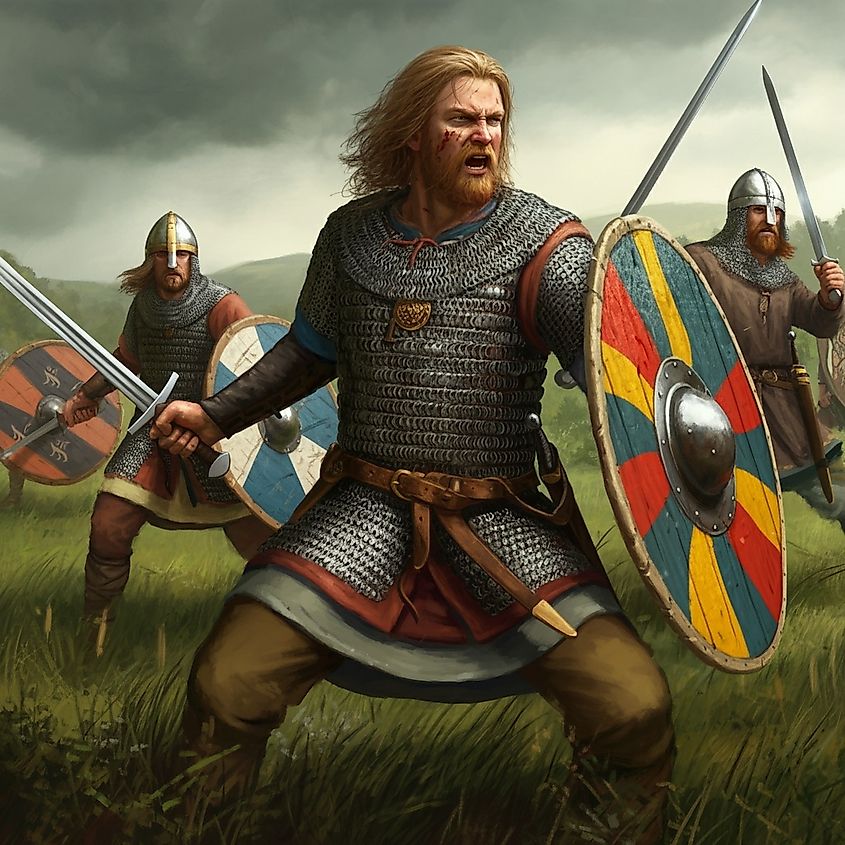
The Anglo-Saxons made a variety of cultural contributions such as the beautiful Lindisfarne Gospels, made by the monastery in Lindsifarne, and the story of Beowulf.
The Anglo-Saxons would bear the brunt of multiple Viking incursions, beginning with the sacking of Lindisfarne in 798 and continuing through the 11th century. In the mid 800s, a Norse confederation called the Great Heathen Army conquered all of England save for Wessex under the rule of King Alfred, who would defend his kingdom and throw back much of the Viking invaders, eventually dividing England between him and the Danelaw.
His grandson Athelstan would conquer all of Danelaw in 927 becoming the first King of England. The Anglo-Saxons troubles were far from done, as they would be conquered by the Danes in 1013 by Canute the Great, whose descendants ruled England until 1042, when Edward the Confessor took the throne.
With the death of Edward the Confessor, the throne of England was contested by Harold Godwinson, a Saxon noble, Harald Hardrada, King of Norway and William, Duke of Normandy. At the battle of Hastings in 1066, William defeated Harald Godwinson, putting an end to nearly 4 centuries of Anglo-Saxon rule.
Kingdom of the Franks: 509 to 840
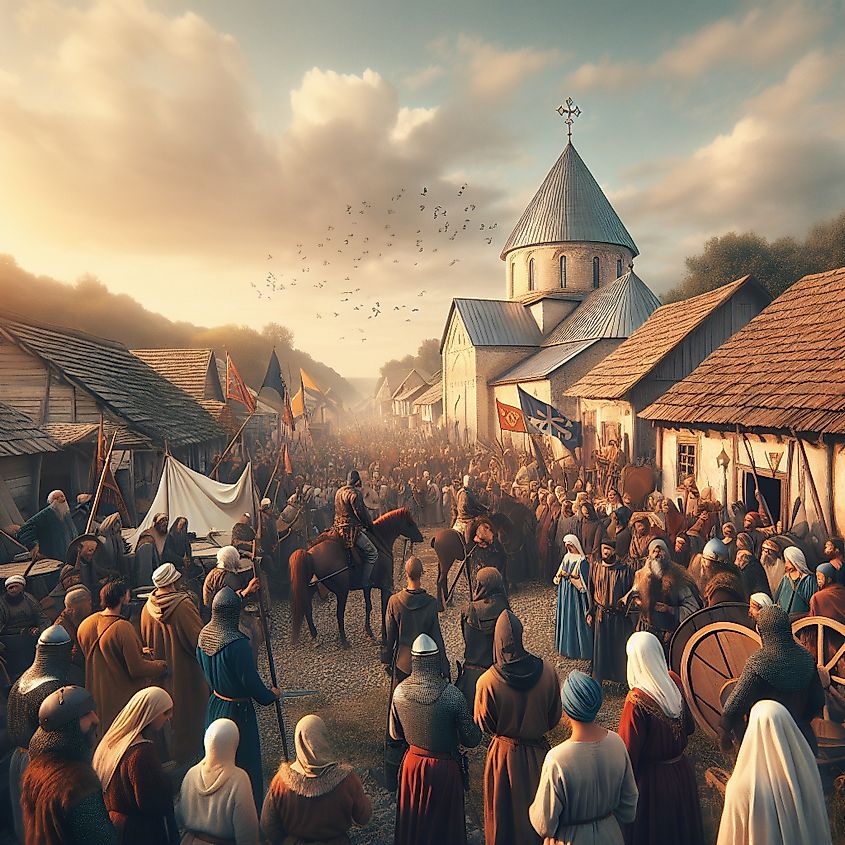
The Franks were a Germanic group that would initially serve as foederatis(allied mercenaries) for the Romans in the late 5th century. They would settle closeby to the Rhine River for some time until 486 when the Frankish King Clovis went to war against a rump state of the Western Roman Empire in then Northern France and conquered it.
Clovis would continue expanding into the area as well as converting to Chalcedonian Christianity by baptism on Christmas 508. This baptism would set the tone for the Franks as a major force for Christianity.
Due to Frankish succession laws, the kingdom would often end up split up between various sons, which were part of the Merovingian dynasty, named after a legendary figure called Merovech.
In the 700s, a rival group to the throne called the Carolingians emerged led by Charles Martel, who in 732 would defeat an attack by the Umayyad Caliphate at the Battle of Tours.
Over time, the Carolingians would gain complete control of the kingdom under Pepin the Short. His son Charlemagne would rise to become the greatest ruler in Frankish history, expanding the kingdom in all directions including Spain, Germany and Italy. In 800, Pope Leo III would crown Charlemagne as Emperor of the Western Roman Empire.
His reign would lead the Carolingian Renaissance, which transformed the region with legal reforms, educational reforms, and writing. Charlemagne was a particular renowned patron of schools for clergy and nobility.
In 840, the realm was split into three: West Francia, Middle Francia: and East Francia. The middle region would be conquered quickly but West Francia eventually became the Kingdom of France with East Francia developing into the Holy Roman Empire, centered in modern day Germany and other countries.
Summary
It's tempting to view the collapse of the Western Roman Empire as a major setback for civilization as a whole as Rome was replaced by barbarians. However, as with much of history, who you consider to be civilized vs. barbaric depends on your point of view.
By looking closely as these successor kingdoms, you can see that they preserved Roman laws, religion, and in many cases the legacy of Rome. They also left us great works of literature such as Beowulf, recreations of the Bible and more.
These successor kingdoms represent a transitory period in European history, where the military might of the Western Roman Empire disappeared but its cultural legacy continued, with some, such as Charlemagne attempting to revive it.
It was said Rome wasn't built in a day, but it also wasn't torn down in a day. We can still feel echoes of the old empire in our world today, if we know where to look.











